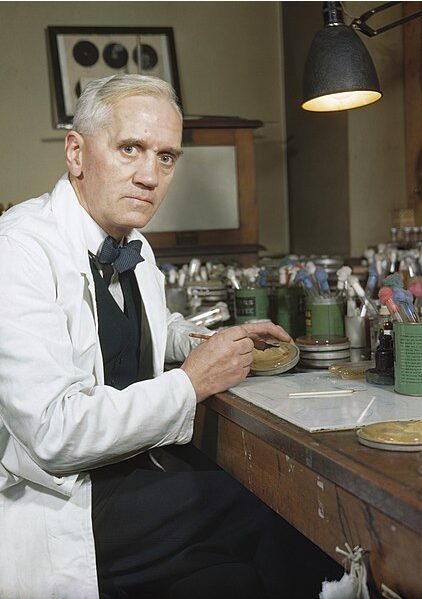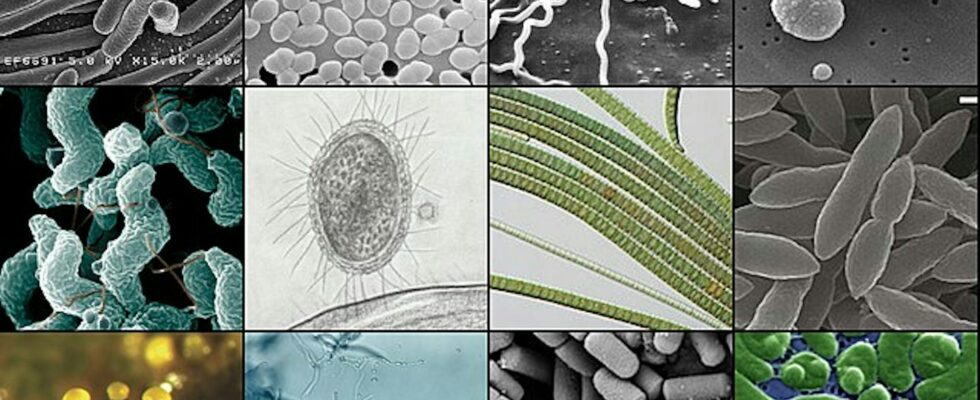Antibiotics are not automatic. You all know this phrase. But, do you know how they were discovered? Maybe. And, how do they work? Not sure. This article from The Conversation takes stock.
Everywhere on Earth live tiny creatures invisible to the naked eye: bacteria. They are 100 times smaller than a millimeter and have only one cell. They are found in large numbers on and in our body. Most of them don’t harm us and even give us a helping hand. For example, they digest certain food components that we cannot digest ourselves, such as fiber in fruits and vegetables.
But very occasionally, more dangerous bacteria cross our path. And these have only one goal: to use our cells, the smallest element of our body, to multiply. That’s when they make us sick.
Normally, our body is strong enough to deal with such an unwanted intruder. We have an immune system made up of powerful soldiers called white blood cells, equipped with an arsenal of chemical weapons. They recognize the invader and destroy it. They easily find their targets thanks to antibodies that mark the intruder like a molecular post-it. And yet, sometimes, even these weapons fail to kill the bacteria!
Fortunately, doctors have a special tool to give our bodies a boost: antibiotics. This word literally means against (“anti”) and living organism (“biota”). Antibiotics are special chemicals that come in many forms. We discovered most of them by studying the interaction between bacteria and other organisms.
How were antibiotics discovered?

This is how the Scottish doctor Alexander Fleming discovered the first antibiotic in 1928. He left for a two-week vacation, forgetting a plaque of bacteria in his laboratory. When he returns, he notices that a fungus has grown on the plate. But around this mushroom, no trace of bacteria! This fungus therefore produced a substance that stops the growth of bacteria. This mushroom is named after Penicilliumthe name of the first antibiotic was therefore obvious: penicillin.
Since then, a large number of different antibiotics have been discovered. Scientists mainly classify them into two groups. Those that kill bacteria or those that prevent them from multiplying, making it easier for our immune system to win the battle.


How do antibiotics fight bacteria?
Antibiotics act on molecules or structures unique to bacteria and which do not exist in humans. This is why antibiotics are so effective and why they come into very little conflict with the cells of the human body.
Bacteria have a cell wall that is built by special proteins that work together, like in a small factory. Each protein has its job, and if one is missing, things go wrong for the bacteria. A large number of antibiotics such as penicillin therefore target some of these proteins and prevent the production and integrity of the cell wall. This creates holes and the bacteria dies.
Other antibiotics prevent duplication of the blueprint for building a new bacteria. In the absence of such a plan, bacteria cannot grow. An example is the class of quinolones of which ciprofloxacin is a part, which are antibiotics effective against infections of the bladder, skin or ears.
If you have a cold or the flu, you should know that these illnesses are caused by even smaller invaders called viruses. And antibiotics can do nothing against them) because they do not contain their targets. In this case, you just have to be patient.


Although antibiotics can get rid of a variety of hostile bacteria, some of them have found ways to escape or eliminate them. For example, by developing small pumps that directly eliminate antibiotics! We are talking about antibiotic resistance, a problem that is exacerbated, among other things, by the misuse or overuse of antibiotics.
It is estimated that in Europe around 35,000 people die each year from antibiotic-resistant infections. Fortunately, for now, we have a diverse and varied arsenal at our disposal that allows us to get rid of these invaders, in most cases. However, doctors strongly recommend that we will need to be more careful in our use of antibiotics to prevent bacteria from becoming resistant to any type of antibiotic in the future.
Researchers continue to work meticulously to always be one step ahead of bacteria. Regardless, it must be recognized that these invisible creatures are capable of a lot!


Pieter Vancamp, Post-doctoral fellow, neurobiologist and specialist in physiology, Inrae.
This article is republished from The Conversation under a Creative Commons license. Read the original article.
Subscribe for free to Artificielles, our newsletter on AI, designed by AIs, verified by Numerama!
